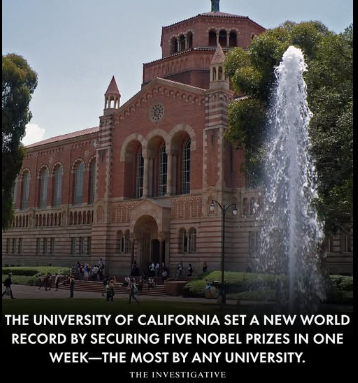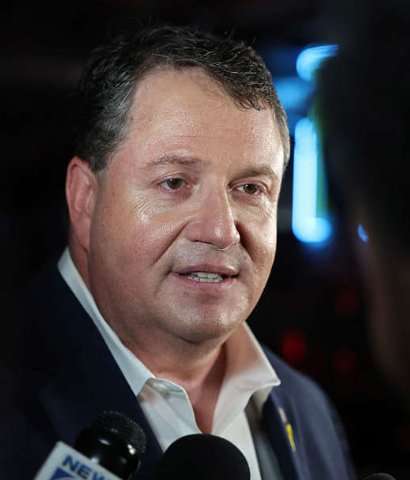The green hydrogen industry in France
The green hydrogen industry in France is rapidly evolving and holds much promise for the country’s decarbonization goals. Here’s a breakdown of the current landscape:
Ambitious targets:
- National Strategy: France aims for 6.5 GW of installed electrolyzer capacity by 2030, producing 20-40% of its industrial hydrogen from renewables. The EU target is even higher, at 10 million mt/year by 2030.
- Investment: €7 billion has been allocated for green hydrogen development until 2030, with €700 million dedicated to supporting production in 2024. A recent €4 billion plan focuses on deploying 1 GW of electrolysis within three years.
Key priorities:
- Domestic production: France wants to become a leader in green hydrogen production and supply, focusing on renewable energy sources like wind and solar for electrolysis.
- Industry decarbonization: Green hydrogen is seen as a crucial tool to reduce emissions in hard-to-abate sectors like steel, chemicals, and refining.
- Mobility: France targets 20,000-50,000 light-duty fuel cell vehicles, 800-2,000 heavy-duty vehicles, and 400-1,000 hydrogen refuelling stations by 2030.
Industry structure:
- Public support: The government provides grants, tax breaks, and other incentives to attract investments and foster innovation.
- Private players: Major French companies like Air Liquide, Engie, and McPhy are actively involved in developing electrolyzers, fuel cell technologies, and infrastructure.
- Regional dynamics: Regional initiatives and collaborations contribute to a diverse and growing industry landscape.
Challenges and opportunities:
- High initial costs: Electrolyzers and hydrogen infrastructure are still expensive, requiring continued government support and cost reduction efforts.
- Public awareness: Building public understanding and acceptance of hydrogen technologies is crucial for wider adoption.
- International competition: France faces competition from other European countries and global players in developing a thriving green hydrogen economy.
The green hydrogen industry in France is full of potential, backed by ambitious government plans, strong private investments, and regional initiatives. Overcoming the challenges and capitalizing on the opportunities will be key to France’s success in achieving its decarbonization goals and establishing itself as a leader in the global green hydrogen market.
Statistics of Green Hydrogen Industry Lansdcape in France
Green Hydrogen Industry Statistics in France (2024):
Production:
- Current annual hydrogen production: 900,000 tons (mostly “gray” from fossil fuels)
- Annual green hydrogen production (2022): 45 kilotons (5% of industrial hydrogen)
- Target green hydrogen production by 2030: 20-40% of industrial hydrogen (roughly 180,000 – 360,000 tons)
- National electrolyzer capacity target by 2030: 6.5 GW
Demand:
- Projected carbon-free hydrogen demand by 2030:
- 70% for industry (ferrous metallurgy leading)
- 7% for energy sector
- Remaining for transportation (light and heavy vehicles, maritime, trains)
Investment:
- €7 billion allocated for green hydrogen development until 2030
- €4 billion plan for deploying 1 GW of electrolysis within 3 years
- €700 million dedicated to supporting production in 2024
Jobs:
- Potential for 50,000 – 150,000 jobs by 2030
International Perspective:
- EU target for annual green hydrogen production by 2030: 10 million metric tons
- France aims to become a major exporter of green hydrogen
Challenges:
- High initial costs for electrolyzers and infrastructure
- Public awareness and acceptance of hydrogen technologies
- International competition
Opportunities:
- Significant government support and funding
- Strong private sector involvement
- Growing regional initiatives and collaborations
Table: Green Hydrogen Industry Statistics in France (2024)
| Category | Statistic |
|---|---|
| Production | |
| Current annual hydrogen production | 900,000 tons (mostly gray) |
| Annual green hydrogen production (2022) | 45 kilotons (5% of industrial hydrogen) |
| Target green hydrogen production by 2030 | 20-40% of industrial hydrogen (180,000-360,000 tons) |
| National electrolyzer capacity target by 2030 | 6.5 GW |
| Demand | |
| Projected carbon-free hydrogen demand by 2030 (by sector) | 70% industry, 7% energy, remaining for transport |
| Investment | |
| Total allocated for green hydrogen development until 2030 | €7 billion |
| Plan for deploying 1 GW of electrolysis within 3 years | €4 billion |
| Dedicated to supporting production in 2024 | €700 million |
| Jobs | |
| Potential jobs created by 2030 | 50,000-150,000 |
| International Perspective | |
| EU target for annual green hydrogen production by 2030 | 10 million metric tons |
| France’s export ambition | Major exporter of green hydrogen |
Note: These statistics are based on publicly available information, and estimates may vary slightly depending on the source.
Conclusion of Green Hydrogen Industry Lansdcape in France
The green hydrogen industry in France is at a pivotal juncture, brimming with immense potential but also facing significant challenges. Here’s a summary of its key takeaways:
Positively bullish:
- Ambitious national targets: France’s aggressive goals for green hydrogen production and electrolyzer capacity by 2030 demonstrate a strong commitment to decarbonization.
- Significant investments: Substantial government funding and private sector involvement provide a solid foundation for industry growth.
- Diverse application potential: Green hydrogen’s applicability across various sectors, from industry and energy to mobility, paints a picture of a transformative fuel source.
- Job creation potential: The burgeoning industry holds the promise of generating countless jobs, boosting the economy and local communities.
- European leadership aspirations: France’s aim to become a major exporter of green hydrogen positions it as a potential pioneer in the global market.
Challenges to overcome:
- Cost reductions: Bringing down the high initial costs of electrolyzers and infrastructure is crucial for wider adoption and scalability.
- Public perception: Building public awareness and acceptance of hydrogen technologies will be necessary for full-fledged societal embrace.
- International competition: France faces stiff competition from other European and global players aiming to dominate the green hydrogen market.
- Technological advancements: Continuous research and development are essential to improve efficiency, safety, and affordability of hydrogen production and utilization.
The future of the French green hydrogen industry is promising, albeit demanding. Successfully navigating the challenges while capitalizing on the opportunities will determine its success in achieving its ambitious decarbonization goals and establishing France as a frontrunner in the global green hydrogen race.
This conclusion concisely summarizes the key points of the French green hydrogen landscape, highlighting both its promise and the hurdles it needs to overcome.
https://www.exaputra.com/2024/01/green-hydrogen-industry-lansdcape-in.html
Renewable Energy
California IS Different, But It’s Not TOO Different
 When my friends and I were growing up in the suburbs of Philadelphia, we regarded California as if it were a foreign country–if not another planet. The widespread speculation was that California was one big movie/TV studio, that had beaches for the thousands of blond-haired surfers who spoke some extremely hip language, and had adoring, bikini-clad girls clinging to them.
When my friends and I were growing up in the suburbs of Philadelphia, we regarded California as if it were a foreign country–if not another planet. The widespread speculation was that California was one big movie/TV studio, that had beaches for the thousands of blond-haired surfers who spoke some extremely hip language, and had adoring, bikini-clad girls clinging to them.
Yet living here soon taught me that, though this perception of the Golden State was in some measure true for the cities and towns on the Pacific, a trip 30 – 40 miles inland exposed a culture that wasn’t altogether different than that of Central Pennsylvania, or Central Alabama for that matter.
I bring this up because of the recent announcement (see above) that the University of California, with its 10 campuses, won five Nobel Prizes recently. UC Santa Barbara alone has 11 Nobel laureates, nine of which are in physics and materials science. That’s a lot of intelligence floating around in a city whose population is only about 89,000.
Per my point, however, 2GreenEnergy “headquarters” is about 30 miles inland from Santa Barbara. Where they have people speaking French and discussing quantum physics, we have saloons and rodeos.
I’m not complaining (too much). It’s still a great place to live, and if I want to find someone to converse with on the subject of quarks and neutrinos, they’re only a short drive away.
Renewable Energy
Trump’s Third Term
 From MSN:
From MSN:
Representative Randy Fine (R-FL) has sparked controversy by advocating for the repeal of the 22nd Amendment, which limits U.S. presidents to two terms, citing President Donald Trump’s role in brokering a Gaza peace agreement as justification for extending his presidency. A bipartisan coalition of lawmakers introduced a resolution denouncing Fine’s proposal as a danger to democratic norms, escalating the debate. Amending the Constitution would require a two-thirds vote in Congress and ratification by three-quarters of state legislatures, a formidable hurdle.
Is this a joke? Congressional Republican Trump sycophant is suggesting that the president’s bid for a third term should be done legally, even though the last few years have brought a nonstop onslaught of grossly illegal acts: the storming of the Capitol, numerous other attempts to overthrow the U.S. federal government by overturning the 2020 election, stealing top-secret government documents, an adjudicated rape, the 34 counts of business fraud on which Trump was convicted, current-day violations of posse comitatus, the execution of unconvicted Venezuelan people on ocean-going ships, and the bulldozing the East Wing of the White House.
The man’s life is one big, ongoing crime; let’s be honest here.
Renewable Energy
How Should the Measles/Mumps/Rubella Vaccine Be Administered? Should You Ask a High School Baseball Coach?
 There are so many things going wrong in this country simultaneously that it’s hard to list them all.
There are so many things going wrong in this country simultaneously that it’s hard to list them all.
Here’s something that no one could have seen coming: (see short video here) crackpot politicians giving parents insane medical advice about how to care for their children.
If I told you that our country’s parents were making decisions on vaccinating their children based on information provided by figure skaters or lawn mower salesmen, you wouldn’t believe me.
But the case is actually worse; it’s coming from the White House.
-
Climate Change2 years ago
Spanish-language misinformation on renewable energy spreads online, report shows
-
Climate Change3 months ago
Guest post: Why China is still building new coal – and when it might stop
-
Climate Change Videos2 years ago
The toxic gas flares fuelling Nigeria’s climate change – BBC News
-

 Greenhouse Gases1 year ago
Greenhouse Gases1 year ago嘉宾来稿:满足中国增长的用电需求 光伏加储能“比新建煤电更实惠”
-
Greenhouse Gases3 months ago
Guest post: Why China is still building new coal – and when it might stop
-

 Climate Change1 year ago
Climate Change1 year ago嘉宾来稿:满足中国增长的用电需求 光伏加储能“比新建煤电更实惠”
-

 Carbon Footprint2 years ago
Carbon Footprint2 years agoUS SEC’s Climate Disclosure Rules Spur Renewed Interest in Carbon Credits
-
Renewable Energy4 months ago
US Grid Strain, Possible Allete Sale















